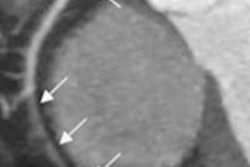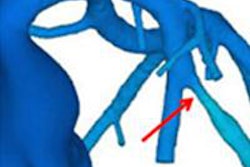Sunday, December 1 | 12:30-1:00 p.m. | LL-PHE3075-SUA | Lakeside Learning Center
The dose readout on your scanner doesn't really tell you much, according to a group from Massachusetts General Hospital, who looked into dose differences between different scanners and scan modes for this education exhibit.The researchers found that the CT dose index volume (CTDIvol) readout on the scanner has little in common with actual absorbed radiation dose in multiple single- and dual-source CT colonography protocols.
The group compared mean absorbed doses measured at six different places near the colonic surface in an anthropomorphic colon phantom on a dual-source CT scanner (Somatom Definition Flash, Siemens Healthcare) in three scanning modes:
- Single-energy mode at tube voltage of 120 kVp
- Dual-energy mode with tube A at 80 kVp and tube B at 140 kVp with Sn filter
- Dual-energy mode with tube A at 140 kVp and tube B at 80 kVp
All scans were performed with the same reported CTDIvol of 1 mGy.
Mean absorbed doses were 1.59 mGy, 1.77 mGy, and 1.44 mGy for the first, second, and third scanning modes, respectively. Dose distribution was lower at both ends of the scanned range in the axial direction and peaked at the middle of the scanned range.
"Our study found that the actual radiation dose to the colon may vary substantially at different scanning modes under the same level of machine-reported dose represented by CTDIvol," co-investigator Wenli Cai, PhD, told AuntMinnie.com.




















